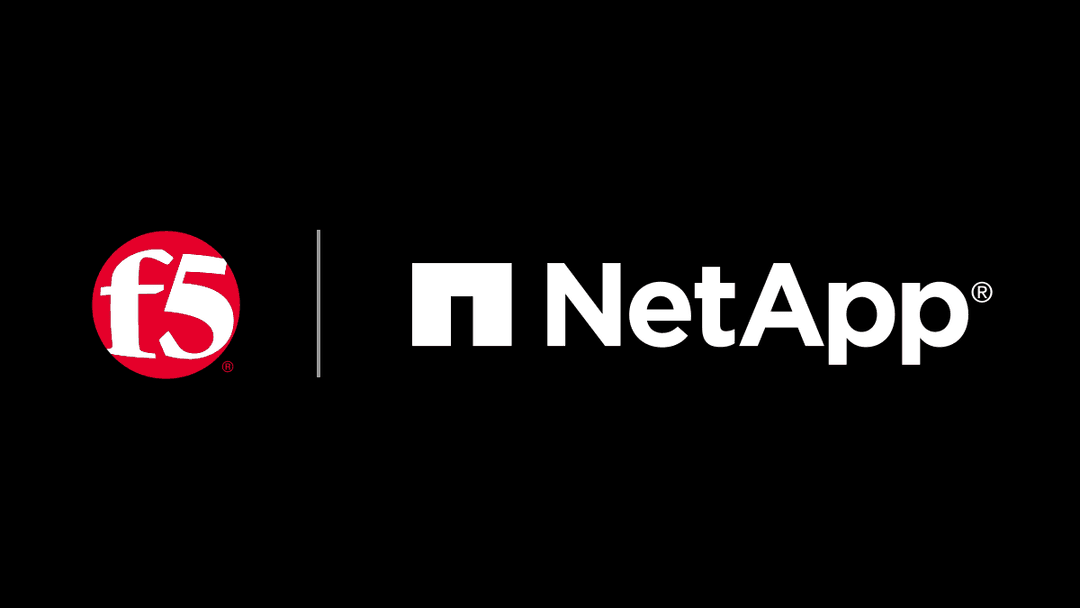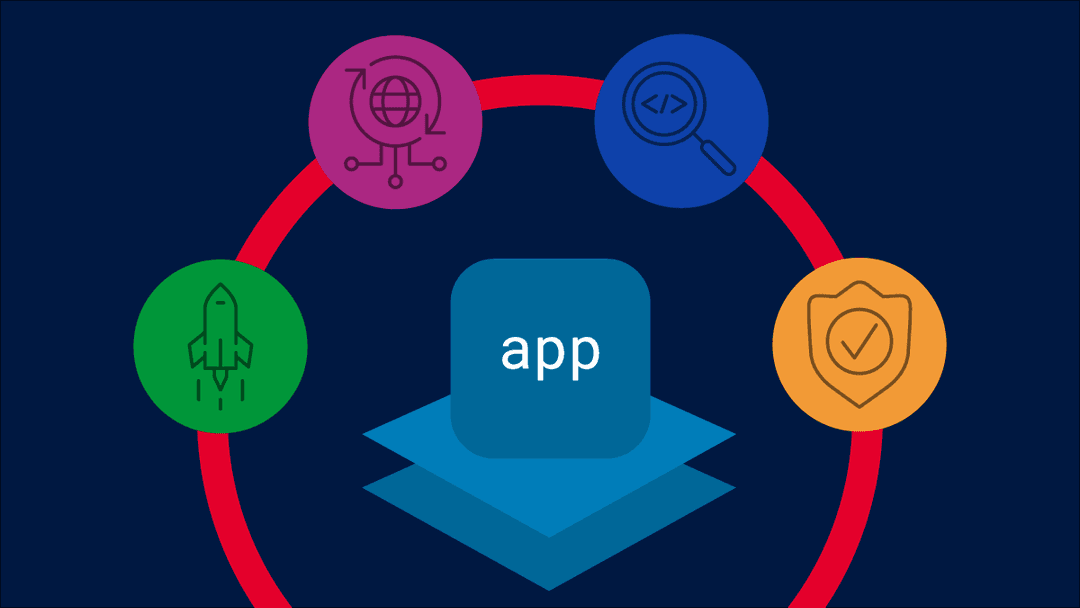As IT teams grapple with the demands of operating enterprise applications, administrators responsible for F5 BIG-IP environments must strike a balance between customizability, speed, and scalability. That’s why many admins default to GUI-based workflows, because of the ease of use and flexibility of “click ops.”
For many organizations, BIG-IP isn’t just traffic management—it’s a mission-critical component that ensures the performance, security, and resilience of its most precious resources: applications. As apps grow, deployments diversify across hybrid and multi-cloud environments (a reality for 94% of organizations), and the need for auditability increases.
That means manual, individualized, and click-ops based approaches to BIG-IP administration workflows simply cannot meet the needs of many organizations. Add in considerations like a constantly growing collection of API endpoints that need to be managed, the rise of mobile apps, app-to-app networking, expanding threat landscapes, and more sophisticated attack vectors (and point solutions to mitigate those threats) —and what you’re left with is what we call the operational “ball of fire.”
The question then becomes: how can your team evolve and scale BIG-IP administration effectively to meet the demands of your enterprise initiatives?
The answer is a holistic solution that unifies every aspect of operating applications: the F5 Application Delivery and Security Platform (ADSP). F5 ADSP was designed to address the growing complexity of hybrid multicloud environments, API sprawl, AI-driven workloads, and an expanded attack surface. At its core, F5 ADSP provides a unified solution that integrates delivery, deployment, security, and intelligent operations into a single platform.
In this blog post, we’ll explore the limitations of manual BIG-IP operations, dig into tools and strategies to scale administration workflows as part of F5 ADSP, and illustrate the outcomes you can achieve by adopting advanced BIG-IP administration and automation strategies.
Limitations of click-ops workflows
There are several limitations to click-ops workflows. These include:
- Manual overhead: Traditional, manual configuration via the BIG-IP GUI, while extremely powerful and highly customizable, can be time-consuming and error-prone, especially when managing complex, distributed workloads with multiple BIG-IP devices and hundreds of virtual servers in different deployment environments. These risks are compounded if there are no frameworks in place to ensure consistency of configuration across all these instances or automation of common repetitive tasks. In fact, we learned in the 2025 State of Application Strategy Report that 60% of organizations are mired in time-sucking manual operational tasks that block adoption of advanced workflows like AIOps.
- Lack of scalability: As app architectures become more dynamic, traditional administration methods fail to scale. Ensuring global consistency for traffic and security policies across hybrid and multicloud environments becomes overwhelming without centralized, repeatable, automated processes.
- Inconsistent configuration management: Without codified, documented workflows, teams risk diverging configurations, leading to outages, security gaps, and challenges with compliance audits. This can be especially risky for organizations operating in highly regulated industries like finance, healthcare, or government.
- Slow deployments: In the age of CI/CD pipelines, API-first design principles, self-service, templating, and instant app delivery, relying on manual steps to spin up or adjust BIG-IP settings creates organizational bottlenecks and slows the pace of innovation.
- Poor visibility and troubleshooting: Many teams struggle with monitoring automation efforts and tracking BIG-IP changes effectively. Without a reliable audit trail or visibility, troubleshooting and rollback become arduous tasks.
Evolving and scaling BIG-IP administration
To overcome these challenges and build resilient, future-proof operational workflows, BIG-IP admins are increasingly turning to scalable practices like scripts, automation frameworks, and infrastructure-as-code (IaC), for example. Below, I outline each approach beginning with foundational administration workflows, moving to advanced strategies like GitOps, and finally ending with full automation lifecycle management.
Here’s an overview of how you can start and the value each approach brings:
1. Policy-driven management using built-in BIG-IP tooling. If your team is taking its first steps toward reducing manual overhead, built-in BIG-IP capabilities like Local Traffic Manager (LTM) policies, iRules, iControl REST API, and Application Services 3 Extension (AS3) offer immediate wins. Using these strategies, you can improve administration and management and increase consistency, reliability, and visibility.
Explore Part 1 of our “Scaling and Automating BIG-IP Administration Workflows” course.
These tactics increase consistency because they reduce human error with reusable, verified policies and templates that can be customized to meet your exact specifications and shared with others within your organization. They improve reliability because they automate repetitive tasks (where many mistakes are made) like failover and traffic management using verified designs and best-practice scripts.
Finally, these approaches enhance visibility because they enable users to maintain clearer audit trails of changes and system behaviors, which makes troubleshooting easier and root cause analysis faster, and helps admins roll back changes quickly if things go wrong.
2. Automating workflows with Terraform and Ansible. For teams ready to graduate from occasional scripting to full automation and orchestration workflows, tools like Terraform and Ansible offer a robust path forward.
Explore Part 2 of our “Scaling and Automating BIG-IP Administration Workflows” course.
Terraform automates, scales, and improves BIG-IP administration workflows by providing a declarative, consistent, and efficient way to provision and manage BIG-IP devices and their associated infrastructure. This, in turn, enable DevOps teams to treat BIG-IP appliances and configurations as reusable, version-controlled code, reducing manual effort, improving scalability, and ensuring consistency across environments.
Ansible automates and improves BIG-IP administration workflows by providing a declarative, repeatable, and efficient way to manage application services configurations, reducing manual effort and ensuring consistency across environments. With Ansible, you can configure BIG-IP settings like pools, monitors, and virtual servers with repeatable, playbook-driven workflows.
Using both tools in tandem—an approach that F5 highly recommends—can transform your daily operations. Combined with CI/CD pipelines (e.g., Jenkins or GitLab), you can scale environments quickly and securely, automate repetitive tasks like logging configuration or provisioning HA failovers, and embed BIG-IP management into the broader DevOps processes, allowing seamless collaboration between cross-functional teams.
Additionally, BIG-IQ can play a central role in enhancing and managing BIG-IP workflows by providing centralized control, visibility, and orchestration for BIG-IP devices. When combined with automation tools like Ansible, BIG-IQ strengthens the workflow by offering robust monitoring, streamlined configuration management, and improved operational efficiency. by offering robust monitoring, streamlined configuration management, and improved operational efficiency.
3. Implementing GitOps and Infrastructure-as-Code. Underpinning streamlined processes is the power of Infrastructure-as-Code (IaC), where every instance and configuration is version-controlled, reusable, and testable. By adopting IaC and GitOps principles, teams can easily improve administration workflows, maintain control, and establish clear audit trails.
Explore Part 3 of our “Scaling and Automating BIG-IP Administration Workflows” course.
Additionally, aligning to IaC and GitOps methodologies enables declarative deployments, which makes it possible to instantly roll out BIG-IP policy adjustments across multiple environments, automate secure policy enforcement and secrets management, and seamlessly integrate rollback strategies or staged deployments.
For advanced teams, storing BIG-IP configurations in Git repositories with CI/CD pipelines also introduces robust security and governance practices (like RBAC), which helps ensure compliance without sacrificing agility.
4. Long-term automation lifecycle management. Scaling BIG-IP administration isn’t just about implementing tools—it’s about building sustainable processes. Mature organizations focus on long-term lifecycle management, which includes considerations like visibility, governance, business alignment, and overall operational health.
Explore Part 4 of our “Scaling and Automating BIG-IP Administration Workflows” course.
More importantly it’s about constantly working to refine these aspects. Start with visibility by adopting monitoring platforms like BIG-IQ and the F5 Application Study Tool (AST) or external tools like Datadog and Splunk.
Once that’s in place, ensure good governance by authoring and evaluating policies on which processes should (or shouldn’t) be automated, factoring in risks and rewards. Align to business needs by consulting stakeholders and measuring impact and ROI. Finally, continuously refine your automation strategy by monitoring deployment outcomes, troubleshooting issues, and maintaining redundancy.
Outcomes you can achieve
By evolving your BIG-IP administration strategy, your organization can reap transformative benefits including:
- Faster deployments: From spinning up new BIG-IP instances in minutes to automating complex policy adjustments, manual delays fade away.
- Operational consistency: Declarative configurations and IaC practices reduce drift, ensuring BIG-IP policies are uniform across your environments.
- Improved security and compliance: GitOps tools enforce version control and auditability, giving you peace of mind in meeting regulatory requirements.
- Greater agility: Scaling BIG-IP workloads in your hybrid or multicloud application environments becomes a predictable, repeatable process. Plus, with automation, templating and service catalogs, more roles can spin up the services they need without involving admins—all while complying with set policies and best practices.
- Staff efficiency and reduced burnout: Automation tools allow teams to focus on strategic initiatives rather than being bogged down by repetitive, manual tasks and taking/closing service request tickets.
Start scaling today
Adopting scalable BIG-IP administration practices doesn’t require you to jump straight to advanced automation overnight. Instead, it’s about finding the right mix of tools and processes for your team’s current maturity level.
If you’d like to learn more, check out our on-demand webinar, “Scale, Enhance, and Evolve BIG-IP Administration,” where we cover this material in-depth.
Or if you’d like to jump right in, head over to GitHub for tools, guides, code snippets, and real-world examples of these strategies.
About the Author

Related Blog Posts

AppViewX + F5: Automating and orchestrating app delivery
As an F5 ADSP Select partner, AppViewX works with F5 to deliver a centralized orchestration solution to manage app services across distributed environments.

Build a quantum-safe backbone for AI with F5 and NetApp
By deploying F5 and NetApp solutions, enterprises can meet the demands of AI workloads, while preparing for a quantum future.

F5 ADSP Partner Program streamlines adoption of F5 platform
The new F5 ADSP Partner Program creates a dynamic ecosystem that drives growth and success for our partners and customers.
F5 NGINX Gateway Fabric is a certified solution for Red Hat OpenShift
F5 collaborates with Red Hat to deliver a solution that combines the high-performance app delivery of F5 NGINX with Red Hat OpenShift’s enterprise Kubernetes capabilities.
F5 Silverline Mitigates Record-Breaking DDoS Attacks
Malicious attacks are increasing in scale and complexity, threatening to overwhelm and breach the internal resources of businesses globally. Often, these attacks combine high-volume traffic with stealthy, low-and-slow, application-targeted attack techniques, powered by either automated botnets or human-driven tools.
Phishing Attacks Soar 220% During COVID-19 Peak as Cybercriminal Opportunism Intensifies
David Warburton, author of the F5 Labs 2020 Phishing and Fraud Report, describes how fraudsters are adapting to the pandemic and maps out the trends ahead in this video, with summary comments.
